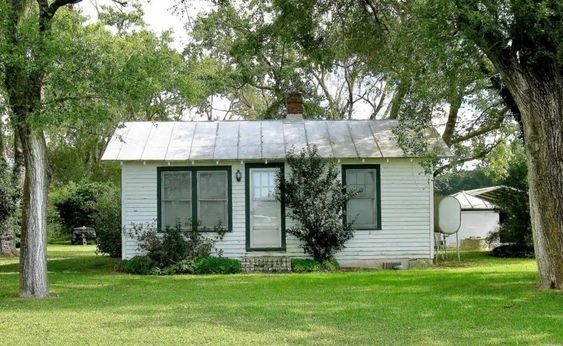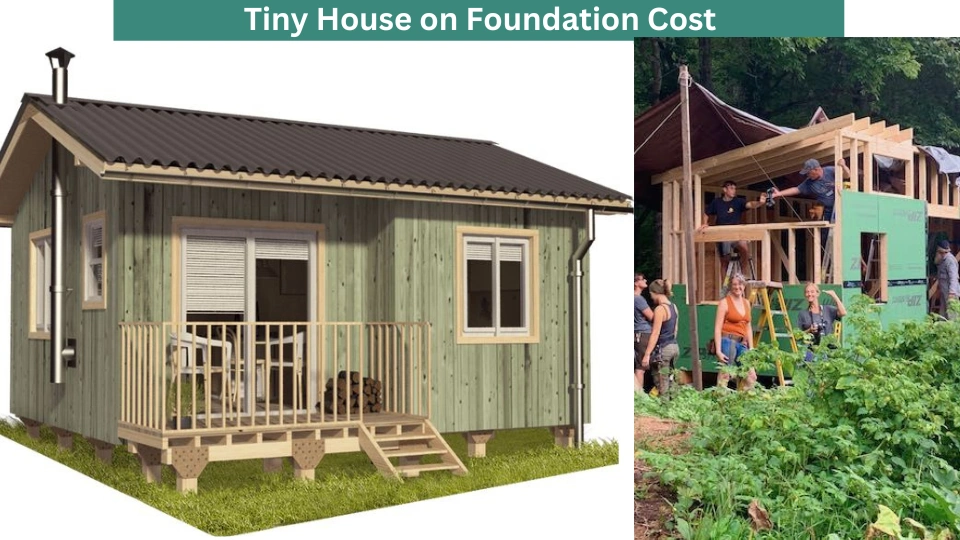Tiny house on foundation cost is something many people are curious about nowadays. These tiny houses are getting really popular because they offer a simple lifestyle with all the good stuff. If you’re thinking of building one, starting with a foundation is an option.

Before you dive into building a tiny house on a foundation, it’s important to understand a few things. Knowing these basics will make your project easier to plan and execute. In this article, we’ll discuss what you need to know before starting your tiny house project and also explore the cost of building one on a foundation.
Table of Contents
ToggleZoning Restrictions
Zoning restrictions are rules made by local governments to control how land is used. They aim to make sure that land is used safely, efficiently, and in a way that benefits the community.
These rules can limit things like how tall buildings can be, what they can be used for, and where they can be built. They’re helpful in managing how cities grow. Before you start building anything, it’s important to check what the local zoning laws say.
Before building, check local zoning laws, as they regulate size, height, and placement of projects. Specific zoning for tiny houses exists in many places, so ensure your plans comply with local regulations.
Choose the Right Foundation
Choosing the right foundation for your tiny house is really important, especially when considering the Tiny house on foundation cost. You need a strong and level foundation to keep your house stable.
If the foundation is not constructed properly, it could cause significant damage over time. This might force you to sell your house to a local cash buyer investor for support, much like the services provided on this site.
A solid foundation is crucial for ensuring the stability of your home. While there are various designs available for tiny house foundations. There are a few important things to mention:
Concrete Slabs:
Concrete slabs are a favored and budget-friendly option for building small houses, especially when considering the Tiny house on foundation cost. They involve pouring a solid, flat piece of concrete directly onto the ground.
This type of foundation is sturdy and easy to construct, making it perfect for compact homes. With a concrete slab foundation, you can easily install plumbing and electrical systems. However, it might not be suitable for areas with expansive soil or a high water table.
Basement Foundation:
If you have a small house and want more space, think about adding a basement foundation. It’s a good way to make your home bigger without building more.
This option costs the most, but it’s important to have a foundation, footings, and walls for stability. A basement foundation is great if you want more living space or a smaller, multi-story home.
When it comes to choosing a foundation for your tiny home, it depends on what you need and like. Many people go for concrete slab foundations because they’re cheap and common.
If you need extra storage, a crawlspace foundation could work well. But a basement foundation gives you the most living area, even though it’s the most expensive choice.
Crawlspace Foundation:
A crawlspace foundation allows you to easily access the area beneath your tiny house by crawling underneath it. This type of foundation can provide extra storage space.
However, choosing this option might mean higher costs and more maintenance compared to a concrete slab foundation.
Building Materials
When constructing a structure, you require various materials and tools, collectively known as building supplies. These encompass essentials such as wood, concrete, roofing materials, insulation, drywall, nails, screws, and power tools.
Ensuring the selection of high-quality building supplies is crucial for any construction endeavor, whether it’s a minor renovation or a large-scale commercial project, especially when considering the Tiny house on foundation cost. It is essential to invest in top-notch materials to guarantee the safety and durability of the building.
Woods:
Builders of tiny houses frequently choose wood as their main construction material because it’s affordable, easy to find, and simple to work with. Wood can be used for framing, siding, flooring, and more, adding a warm and welcoming atmosphere to the tiny house.
However, it’s important to remember that wood requires regular maintenance to prevent decay and maintain structural integrity.
Concrete:
If you want a strong and long-lasting material for your small house foundation, concrete is a great option. It’s durable and can handle extreme temperatures well, thanks to its excellent insulation and weather-resistant properties.
However, it might be a bit pricey compared to other materials, and working with it can be challenging, requiring specific skills.
Steel:
Steel is becoming a popular choice for building small homes because it’s durable and can handle different weather conditions well, making it perfect for people who travel in tiny homes.
It’s also great for those who want a material that’s resistant to pests and needs little maintenance. However, steel is more expensive than wood and requires specific equipment and expertise to work with properly.
Plumbing and Electrical Services
When you’re building a tiny house on a foundation, it’s really important to make sure that plumbing and electricity are set up correctly.
This means installing water, sewer, and electrical outlets, switches, and lights. Also, don’t forget about ventilation and an air conditioning system, they’re essential too.
When you partner with licensed plumbers and electricians, you can trust that your installation will be safe and compliant with all the necessary codes and regulations.
Interior Design
The interiors design of tiny houses are important, including storage, comfortable seating, sleeping areas, a kitchen, and a bathroom.
To personalize your tiny home, choose colors and materials that match your style. Decorate your compact space with appropriately sized appliances and furniture.
When designing the interior of your foundation-mounted small house, consider space, functionality, and your personal preferences.
Focus on maximizing storage, using multi-functional furniture, bringing in natural light, and adding personal touches to ensure comfort and practicality in your compact living space.
Insulation
Insulation is really important for tiny houses because it helps keep your home warm in the winter and cool in the summer. This means you spend less on heating and cooling and make your small living space more comfortable.
There are different types of insulation to choose from, like spray foam, fiberglass batts, and blown-in cellulose. You can pick the one that suits your climate and budget best.
Choosing the right insulation makes sure your tiny house stays cozy and energy-efficient all year round, just the way you like it.
Building Codes
When you’re building the foundation for a tiny home, it’s really important to follow the building rules and get the necessary permits, especially when considering the Tiny house on foundation cost.
Building codes are basically a set of rules that tell you how buildings should be designed, built, and taken care of. These rules are there to make sure everyone stays safe and healthy.
They cover a lot of important stuff, like making sure the building is strong enough, preventing fires, keeping the electrical and plumbing systems working right, and making sure everyone can access the building easily. To make sure building projects meet these standards, local authorities require permits.
Building a tiny house on a foundation can be a fulfilling journey, but it requires careful planning and attention to detail, especially when considering the Tiny house on foundation cost. When constructing a house, there are several important factors to consider.
First, it’s essential to research the zoning regulations in your local area to ensure compliance with the law. Additionally, selecting the right foundation type and building materials is crucial for the house’s structural integrity.
Proper installation of plumbing and electrical systems is also necessary to ensure smooth operation. Adequate insulation is crucial for maintaining a comfortable temperature inside the house.
Designing the interior with both comfort and functionality in mind is equally important. By following these guidelines, you can build a small house on a solid foundation that meets all regulations and reflects your unique preferences and needs.
Find tiny homes for sale and discover your perfect compact living solution.
Frequently Asked Questions
How Much Does a 400 sq ft Tiny House Cost?
The cost of a 400 sq ft tiny house can vary a lot based on materials, location, and finishes. Usually, building or buying one might cost between $40,000 to $100,000 on average. This estimate is for a basic build without fancy finishes or expensive materials.
How Much is a Tiny House on Wheels?
a tiny home on wheels costs between $60,000 to $80,000 on average. If you’re considering a trailer, it’s worth noting that its cost is similar to laying a foundation, which can range from $5,000 to $9,500.
How Much Does it Cost to Build a Tiny House?
A tiny house costs between $30,000 and $60,000 on average. But the price can vary a lot, from as low as $8,000 to as high as $150,000, depending on what amenities you decide to have.
What’s the Tiny House on Foundation Cost, Including Foundation Expenses?
Constructing a Tiny house on foundation cost typically falls between $53,000 and $57,000. The foundation itself generally ranges from $5.50 to $8 per square foot, totaling around $6,000 to $9,000.
Can you Put a Tiny House on a Foundation?
Using a permanent foundation not only gives you more design options but also allows for regular utility connections. Tiny houses on wheels usually rely on RV hookups. Another advantage of a permanent foundation is that it’s more likely to be approved for residential use.

